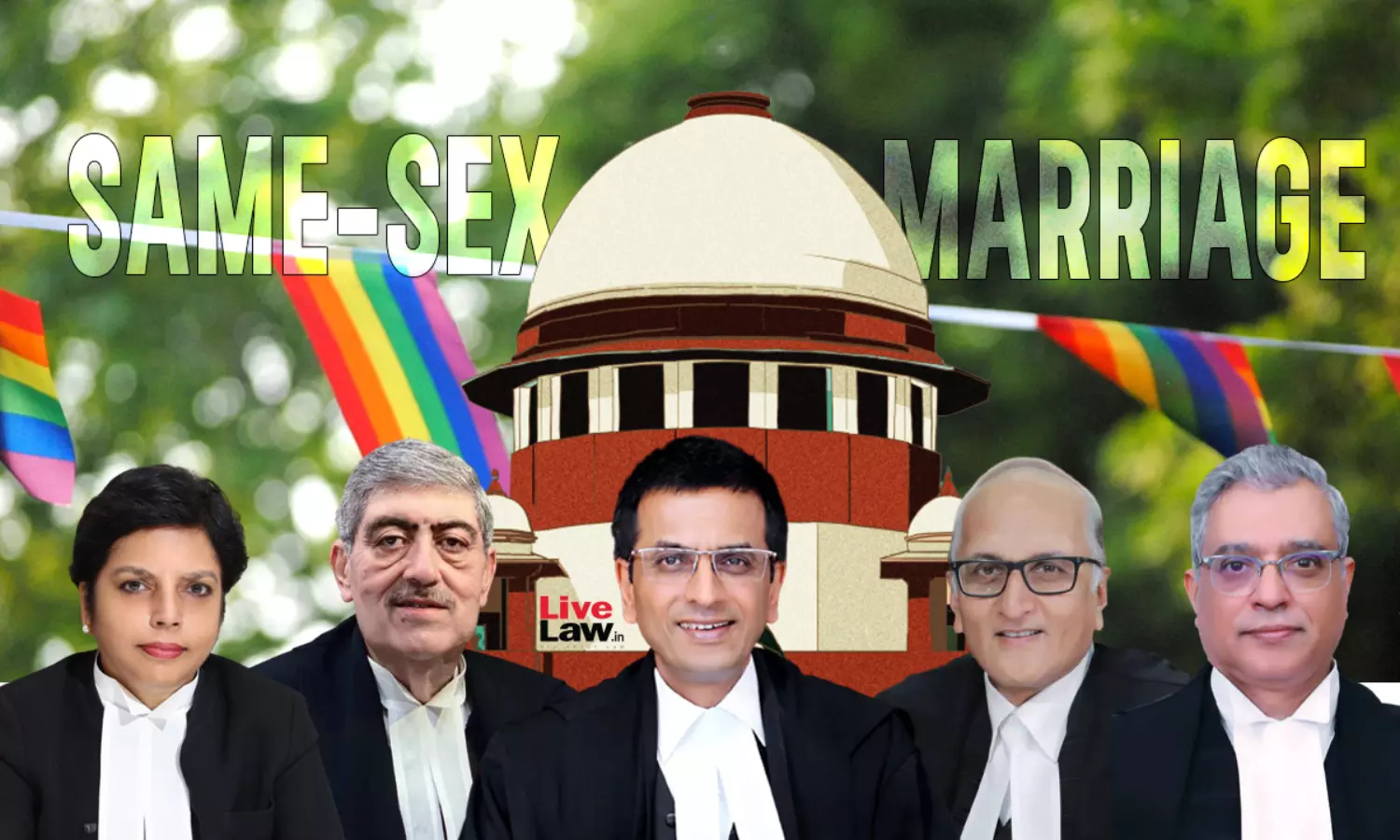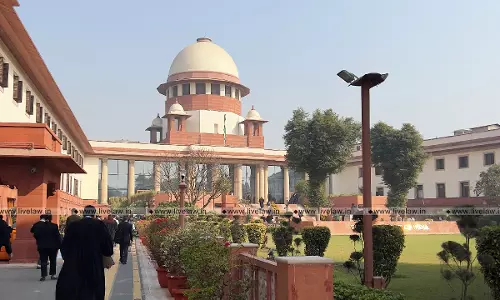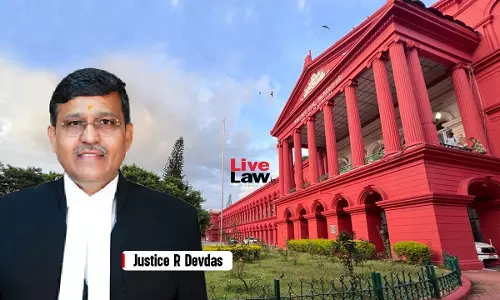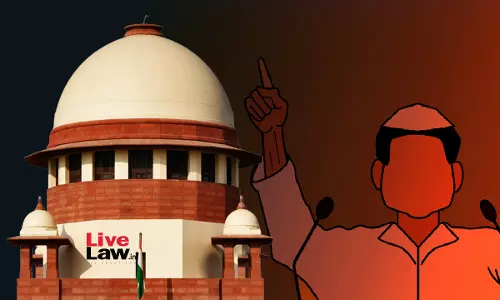Same Sex Marriage Case : Supreme Court Expresses Reluctance To Examine Special Marriage Act Provisions On Notice & Objections

In the matter pertaining to marriage equality in India, on the ninth day of the arguments, Senior Advocate Dr AM Singhvi submitted before the Supreme Court his rejoinder arguments. The bench comprising CJI DY Chandrachud, Justice Sanjay Kishan Kaul, Justice S Ravindra Bhat, Justice Hima Kohli, and Justice PS Narasimha heard the matter. Objections to notice regime under Special Marriage...
In the matter pertaining to marriage equality in India, on the ninth day of the arguments, Senior Advocate Dr AM Singhvi submitted before the Supreme Court his rejoinder arguments. The bench comprising CJI DY Chandrachud, Justice Sanjay Kishan Kaul, Justice S Ravindra Bhat, Justice Hima Kohli, and Justice PS Narasimha heard the matter.
Objections to notice regime under Special Marriage Act: Should it be deferred to later?
When Dr Singhvi started arguing against the notice and objection regime of the Special Marriage Act (SMA), CJI DY Chandrachud orally remarked–
"Your argument in the challenge to notice provisions postulates a verdict in your favour that there is a right to marriage under the SMA. Otherwise the notice provision doesn't apply to same sex couples at all. Your challenge to Sections 7 and 10 has to be deferred to a point when we have ruled on legality of same sex marriage."
Justice Hima Kohli added–
"We might be putting the cart before the horse."
To this, Singhvi stated that while he agreed that the point of notice and objection arose only if the court held queer people to be eligible under the SMA, he added the two issues were inextricably intertwined. Without the relief concerning notice and objection, he argued, much of the right to marry would be hollow. "The vulnerability, the practical operation, the invitation to violence- will make that right 50-70% illusory," he added.
While the bench suggested that it would be better for the bench to rule on the principal aspect of whether the petitioners are entitled to the declaration of right to marry or not, Singhvi insisted for a decision on the notice aspect to be made post hearing his arguments.
He argued–
"The prayer for striking down the notice and objection regime of SMA is an essential and indivisible component of my prayer for marriage equality. Without this head, you would recognise the same sex marriage but not equality. You would grant marriage but not equality."
However, the bench expressed that it would prefer to confine the hearing to the issue relating to recognition of same-sex unions and that the challenge to notice & objections regime in the SMA can be heard by a division bench. The bench said that the second issue was not confined to same-sex couples only.
During an earlier hearing the in case, the bench had questioned these provisions of the Special Marriage Act, and said that they were based on patriarchy and exposed couples to invasion by vigilante groups.
'Based On Patriarchy, Exposes Couples To Invasion' : Supreme Court Questions Special Marriage Act Provisions On Notice Inviting Objections
Constitution-compliant reading of SMA is within bounds of legitimate statutory interpretation
Dr Singhvi argued that the petitioners were not just seeking a declaration of right to marry but specifically right to marry under the SMA by an interpretation of SMA which would allow the solemnisation of non heterosexual marriages. He contended that the case was about interpretation to apply an existing law in a non discriminatory fashion and the same did not require judicial legislation.
In this context, he submitted that the underlying thrust of the SMA was that it was a legislation that was not only agnostic towards ascriptive characteristics (such as faith, caste) of parties but it was designed to facilitate marriages lying outside the pale of social acceptability. He said–
"SMA's entire birth - the whole purpose was to facilitate marriages. In that sense, SMA was a significant advance because it was dealing with marriages outside social acceptability. Social acceptability is the heart of SMA."
Thus, he stated that the right to marry, along with a scheme for its implementation, already existed and the petitioners were only asking for a non-discriminatory access to that existing right and institution.
Relief sought is workable : Court need not enter any thicket of personal laws
He argued that the relief sought neither required the court to create a new social institution, nor it required to have a new definition of marriage. He said that the respondents had relied on Section 21A of the SAM to state that the SMA regime was linked with personal laws. For context, Section 21 of SMA provides that succession to the property of any person married under the SMA will be governed by the provisions of the Indian Succession Act, 1925 (ISA). However, Section 21A of the SMA carves out an exception for marriages among persons professing the Hindu, Buddhist, Sikh or Jaina religion, stating that they remain members of their undivided families and governed by the Hindu Succession Act, 1956 (HSA).
Dr Singhvi argued that Section 21A did not create a barrier to a constitution-compliant reading of the SMA. First, he said that Section 21A only applied for marriages of two Hindus and that too only in two narrow respects of succession and membership of the undivided family. He provided the bench with three ways to work out the relief regarding Section 21A
a. The Court may not pronounce on the applicability of Section 21A to non- heterosexual Hindu couples in the present litigation, and leave questions of succession open for future litigation or;
b. The Court may hold that the SMA will apply to non-heterosexual couples exactly as it is applied to heterosexual couples. Thus, Hindu non-heterosexual couples would be governed by the HSA and non-Hindu/interfaith non-heterosexual couples would be governed by the ISA. This would require the court to extend its gender-neutral reading of the SMA to the HSA and ISA or;
c. The Court may hold that since religious and personal law-related issues are beyond the scope of the present case, personal law statutes as well as provisions of secular laws that relate back to personal laws (like Section 21A of SMA) would be excluded from consideration. Since Section 21A itself was introduced as an exception to the regime under Sections 19-21, non-consideration of the issue of Section 21A would simply mean a reversion to the default regime of ISA. This would be a consistent interpretive approach.
Justice Bhat remarked–
"So we come back to the old position. When it comes to same sex couples, we'll interpret in a particular manner. Then there is a classification amongst the same sex couples. You're saying that those who fall in 21A- treat them differently, rest leave to ISA. You're actually sub classifying."
Sr Adv Mukul Rohatgi also provided a suggestion to the bench. He said–
"If you don't agree to reading down SMA, your lordships grant us a declaration that we can marry. We require a state recognition, a document. A document of marriage by way of an affidavit between two parties that I take you as a spouse can be made under Section 18 of the Registration Act. So that way I steer clear of SMA. I have an affidavit, I can have a registration with that."
The arguments will continue today. Earlier in the day, the Court heard the arguments of the National Commission for the Protection of Child Rights and certain intervenors against the petition. Report on that can be read here.
Click Here To Read Dr Singhvi's Rejoinder




